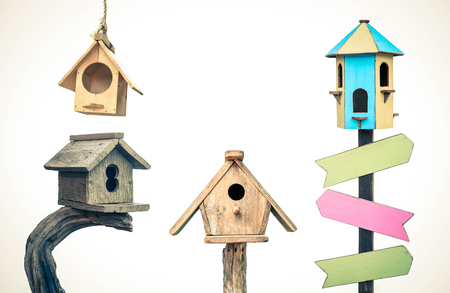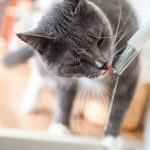Understanding the Importance of a Clean Cage
Keeping your bird’s cage clean is not just about maintaining appearances—it’s a crucial part of responsible pet ownership. Regular cage cleaning directly impacts your bird’s health by reducing the risk of diseases caused by bacteria, mold, and parasites that thrive in dirty environments. When old food, droppings, and soiled bedding are left to accumulate, harmful germs can quickly multiply, leading to respiratory issues, skin irritations, or more severe illnesses for your feathered friend. In addition to health benefits, a clean cage creates a comfortable, stress-free environment where birds can eat, play, and rest without discomfort. Think of it like this: just as you wouldn’t want to live in a messy home filled with trash and bad smells, neither does your bird. By making cage cleaning a regular habit, you ensure your pet stays happy, healthy, and safe every single day.
Choosing the Right Cleaning Supplies
When it comes to keeping your bird’s cage clean, selecting the right cleaning supplies is just as important as the cleaning routine itself. Using the wrong products can put your feathered friend’s health at risk, so it’s crucial to opt for safe and effective options that are commonly found in American households. Here’s how you can identify the best cleaning products and tools while ensuring everything you use is pet-safe and non-toxic.
Pet-Safe Cleaning Products
Many standard household cleaners contain chemicals that are harmful to birds, such as bleach, ammonia, or strong disinfectants. Instead, choose these safer alternatives:
| Product | Why It’s Safe | Where to Find |
|---|---|---|
| White Vinegar (diluted) | Natural disinfectant, non-toxic when rinsed properly | Grocery stores |
| Baking Soda | Mild abrasive for scrubbing, odor neutralizer | Baking aisle in supermarkets |
| Unscented Dish Soap | No harsh chemicals or fragrances, gentle on cages | Household cleaning section |
| Commercial Bird Cage Cleaners (labeled pet-safe) | Specifically formulated for birds; always check labels | Pet stores or online retailers |
Essential Cleaning Tools
- Scrub Brushes: Use small brushes or old toothbrushes for corners and perches.
- Microfiber Cloths: Excellent for wiping down bars without leaving fibers behind.
- Buckets: Designate one specifically for cage cleaning to avoid cross-contamination.
Tips for Safe Cleaning Practices
- Avoid anything with added scents or antibacterial agents unless labeled bird-safe.
- Always rinse thoroughly after cleaning to remove any residue.
- If using a new product, test it on a small area first and watch your bird for any adverse reactions.
Selecting the right supplies doesn’t have to be complicated—most items are already in your home or easily available at local stores. By focusing on non-toxic, fragrance-free, and bird-approved products, you create a clean environment that keeps your pet both safe and healthy.
![]()
3. Establishing a Cleaning Routine
Keeping your bird’s cage clean isn’t just about appearances—it’s essential for your bird’s health and happiness. In the U.S., most pet birds thrive when their environment is kept tidy and sanitary. To make this manageable, set up a cleaning routine that breaks tasks into daily, weekly, and monthly steps. Here’s how you can structure an effective cleaning schedule for your feathered friend:
Daily Cleaning Tasks
Action Steps: Every day, remove leftover food, clean food and water dishes with hot soapy water, and replace cage liner or newspaper at the bottom of the cage. These quick actions help prevent bacteria growth and discourage pests like ants or flies.
Example:
If you have a parakeet or cockatiel, check under perches for droppings each morning and swap out soiled paper before heading to work. This keeps odors down and your bird’s feet healthy.
Weekly Deep Clean
Action Steps: Once a week, set aside time to wipe down the bars, perches, and toys with a bird-safe cleaner or a diluted vinegar solution (never use harsh chemicals). Scrub any stubborn spots and rinse thoroughly before returning items to the cage.
Example:
Sunday afternoons are perfect for giving your African Grey’s cage a full once-over while they enjoy some supervised playtime outside the cage. Rotate toys to keep things interesting and ensure everything is dry before reassembly.
Monthly Maintenance
Action Steps: At least once a month, dismantle the entire cage if possible. Soak all removable parts in warm, soapy water. Inspect for signs of rust or damage, which could be dangerous for your bird. Replace worn-out accessories as needed.
Example:
If you notice your conure’s favorite swing looks frayed during your monthly cleaning, swap it out to avoid accidental injuries. This scheduled deep clean also gives you a chance to rearrange the cage layout to stimulate your bird mentally.
Pro Tip:
Set reminders on your phone or mark your calendar for each cleaning level—daily, weekly, and monthly. Consistency makes it easy to keep your pet’s home healthy without feeling overwhelmed.
4. Step-by-Step Cage Cleaning Process
Keeping your birds cage clean is crucial for their health and happiness. Below is a straightforward, step-by-step guide designed for American pet owners, breaking down the process from start to finish. Follow these steps regularly to maintain a safe and hygienic environment for your feathered friend.
Step 1: Gather Your Supplies
- Cage-safe disinfectant or white vinegar solution
- Scrub brushes and sponges (designated only for pet use)
- Paper towels or clean cloths
- Trash bags
- Gloves
- Replacement liners (newspaper or cage-specific paper)
Step 2: Remove Your Bird and Accessories
Before cleaning, gently transfer your bird to a safe travel carrier or another secure room. Take out all accessories—perches, toys, food, and water dishes—for separate cleaning.
Step 3: Disassemble the Cage
If possible, break down the cage into manageable parts. This makes it easier to scrub every corner and ensures no spot is missed. Remove the bottom tray and grates as well.
Cage Disassembly Checklist
| Part | Action |
|---|---|
| Main cage body | Separate from base/tray if possible |
| Tray/liner area | Slide out for deep cleaning |
| Perches/toys/bowls | Remove all for individual washing |
Step 4: Clean and Disinfect Each Part
- Scrub all surfaces with warm, soapy water. Use a brush to reach corners and crevices.
- Rinse thoroughly to remove soap residue. Birds are sensitive to chemicals.
- Spray each part with a cage-safe disinfectant or diluted white vinegar (1 part vinegar, 2 parts water).
- Let sit for at least 10 minutes before rinsing again.
- Dry completely with paper towels or let air dry.
Step 5: Wash Accessories Separately
Toys, perches, and bowls can harbor bacteria. Scrub them individually, rinse well, and let dry before returning them to the cage.
Step 6: Replace Liners and Reassemble the Cage
Add fresh newspaper or cage liners to the tray. Put the cage back together securely, ensuring all latches are closed tight to prevent escapes.
Liner Replacement Options Table
| Liner Type | Pros | Cons |
|---|---|---|
| Newspaper | Cheap, easy to replace daily | Ink may transfer if wet; not as absorbent as some specialty papers |
| Cage liner paper | No ink risk, highly absorbent, odor control features available | Slightly more expensive than newspaper |
| Pine shavings (untreated) | Naturally absorbs moisture; reduces odor | Avoid cedar; shavings can be messy and sometimes dusty |
Step 7: Return Your Bird to Its Fresh Home!
Once everything is dry and reassembled, bring your bird back to its sparkling clean cage. Keep an eye on their behavior after cleaning—some birds need a little time to adjust to changes in their environment.
5. Handling and Disinfecting Accessories
Keeping your bird’s cage truly clean goes beyond just wiping down the bars. Accessories like perches, toys, and food and water dishes can harbor bacteria and mold if not cleaned properly. To ensure every part of your bird’s environment is safe and sanitary, it’s important to follow a routine that covers all these essentials.
Best Practices for Cleaning Perches
Remove perches from the cage at least once a week. Use hot, soapy water and a scrub brush to remove droppings and debris. Rinse thoroughly and allow them to dry completely before putting them back in the cage. For wooden perches, avoid harsh chemicals—white vinegar diluted with water is a safe option that won’t leave harmful residues.
Sanitizing Toys
Toys are vital for your bird’s mental health but can become contaminated quickly. Rotate toys regularly and wash them with mild dish soap weekly. For plastic or metal toys, a soak in a bird-safe disinfectant (or a vinegar solution) followed by a thorough rinse will help eliminate germs. Always inspect toys for wear and tear; damaged toys can pose choking hazards or trap bacteria in cracks.
Cleaning Food and Water Dishes
Food and water bowls should be washed daily using hot water and unscented dish soap. If possible, keep two sets of dishes so you can always have one clean set ready while the other dries. Avoid using sponges that may harbor bacteria; instead, use brushes dedicated solely to your bird’s accessories.
Ensuring Every Part Is Safe
Check corners, crevices, and attachment points where dirt can accumulate unnoticed. Wipe down all surfaces during each cleaning session. Remember: A quick daily spot-clean plus a thorough weekly deep clean will help keep your bird healthy and happy. Consistently practicing these steps creates an environment where your feathered friend can thrive without risk from hidden germs or unsafe accessories.
6. Common Mistakes to Avoid
When it comes to keeping your bird’s cage clean, even well-intentioned American pet owners can fall into some common pitfalls. Here are frequent mistakes and how you can sidestep them for your bird’s safety:
Using Harsh Chemicals
Many people reach for standard household cleaners, but these often contain toxic substances that are dangerous for birds. Tip: Always choose avian-safe cleaning products or make a simple solution using vinegar and water.
Inconsistent Cleaning Schedule
It’s easy to forget regular cleaning when life gets busy. Skipping days leads to bacteria and mold buildup. Tip: Set reminders on your phone or add cage cleaning to your weekly chore list.
Neglecting Hard-to-Reach Areas
Corners, perches, and food dishes can harbor hidden dirt. Overlooking these spots puts your bird at risk. Tip: Use small brushes or old toothbrushes to get into tight spaces each time you clean.
Ignoring Soiled Toys and Accessories
Toys and ladders quickly collect droppings and debris, yet they’re often ignored during routine cleaning. Tip: Wash all accessories weekly with hot water and bird-safe soap.
Not Drying the Cage Properly
A damp cage is a breeding ground for mold and mildew. Tip: After washing, wipe down all surfaces thoroughly and let everything air dry before reassembling.
Reusing Dirty Cleaning Tools
If you use the same dirty sponge or rag, you’re just spreading germs around. Tip: Designate specific cleaning tools for the birdcage, wash them after each use, and replace them regularly.
Avoiding these mistakes will help keep your bird’s environment truly clean and safe—giving you peace of mind while supporting your feathered friend’s health.
7. Monitoring Your Bird’s Health Through Cleanliness
Keeping your bird’s cage clean isn’t just about providing a pleasant environment—it’s also a practical way to monitor your bird’s health. When you regularly clean the cage, you get a close-up look at your bird’s droppings, feathers, and leftover food, all of which can give you early warning signs if something isn’t right.
Spotting Early Signs of Illness
During cleaning, pay attention to any changes in your bird’s droppings, such as unusual color, consistency, or smell. Healthy droppings are usually firm with a clear separation between solid and liquid components. Any drastic change—like watery stools, discoloration, or an unusually strong odor—could signal digestive issues or infection.
Feather and Behavior Checks
While removing old feathers and debris, look for excessive feather loss or abnormal plucking. This could be related to stress, poor diet, or underlying illness. Also, observe if your bird is less active, hiding more than usual, or showing signs of labored breathing.
What to Look for During Cleaning
- Unusual droppings (color, consistency, amount)
- Feather loss or damaged feathers
- Changes in leftover food (not eating as much or at all)
- Signs of pests like mites or ants in the cage
If you notice anything out of the ordinary during cleaning, document the changes and consult an avian vet promptly. Regular cleaning routines not only keep the habitat sanitary but also help you catch small health issues before they become serious problems—ultimately keeping your feathered friend safer and healthier.


